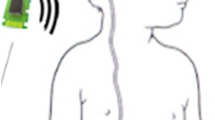Abstract
The problem of excess cerebrospinal fluid in the brain (hydrocephalus) is generally managed using a passive pressure or flow regulated mechanical shunt. Despite the success of such devices, they have been plagued with a number of problems. It is desirable to have a shunt valve that responds dynamically to the changing needs of the patient, opening and closing according to a dynamic physiological pattern, rather than simply to the hydrostatic pressure across the valve. Such a valve would by necessity be mechatronic, electronically controlled by software. In this article, different methods for controlling such a mechatronic valve are explored, and the effect of current hydrocephalus management techniques on the intracranial hydrodynamics of acute hydrocephalus patient compared with those based on a mechatronic valve was investigated using numerical simulation. Furthermore, the performance of these techniques was evaluated based on a proposed multi-dimensional figure of merit. In addition, an empirical valve schedule was proposed based on different criterions. An intelligent shunting system is seen as the future in hydrocephalus management and treatment, and towards this end, suitably programmed mechatronic valves would attempt to mimic normal physiology and potentially overcome many of the problems associated with current mechanical valves.







Similar content being viewed by others
References
Alperin N, Lee S, Loth F, Raksin P, Lichtor T (2000) MR-intracranial pressure (ICP): a method for noninvasive measurement of intracranial pressure and elastance (Baboon and Human Study). Radiology 217(3):877–885
Andersson N, Malm J, Wiklund U, Eklund A (2007) Adaptive method for assessment of cerebrospinal fluid outflow conductance. Med Biol Eng Comput 45(4):337–343
Andersson K, Manchester IR, Malm J, Eklund A (2010) Real-time estimation of cerebrospinal fluid system parameters via oscillating pressure infusion. Med Biol Eng Comput 48(11):1123–1131
Aschoff A (2001) The evolution of shunt technology in the last decade: a critical review. In: 3rd International hydrocephalus workshop, Kos, Greece
Clatz O, Litrico S, Delingette H, Paquis P, Ayache N (2007) Dynamic model of communicating hydrocephalus for surgery simulation. IEEE Trans Biomed Eng 54(4):755–758
Eklund A, Smielewski P, Chambers I, Alperin N, Malm J, Czosnyka M, Marmarou A (2007) Assessment of cerebrospinal fluid outflow resistance. Med Biol Eng Comput 45(8):719–735
Ginggen A (2007) Optimization of the treatment of hydrocephalus by the non-invasive measurement of the intra-cranial pressure. PhD Thesis, Infoscience, EPFL, Czech. Available http://library.epfl.ch/theses/?nr=3757
Hornero R, Aboy M, Abásolo D (2007) Analysis of intracranial pressure during acute intracranial hypertension using Lempel-Ziv complexity: further evidence. Med Biol Eng Comput 45(6):617–620
Jeong JS, Yang SS, Yoon HJ, Jung JM (2004) Micro devices for a cerebrospinal fluid (CSF) shunt system. Sens Actuators A 110:68–76
Miesel KA, Stylos L (2001) Intracranial monitoring and therapy delivery control device, system and method. U.S. Patent 6248080
Miethke C (2005) Hydrocephalus valve. U.S. Patent 6926691
Momani L, Alkharabsheh A, Al-Nuaimy W (2008) Design of an intelligent and personalised shunting system for hydrocephalus. In: Conference on the Proceedings of 30th IEEE Engineering in Medicine and Biological Society, Vancouver, Canada, pp 779–782
Scalzo F, Xu P, Asgari S, Bergsneider M, Hu X (2009) Regression analysis for peak designation in pulsatile pressure signals. Med Biol Eng Comput 47(9):967–977
Schley D, Billingham J, Marchbanks RJ (2004) A model of in vivo hydrocephalus shunt dynamics for blockage and performance diagnostics. Math Med Biol 21(4):347–368
Ursino M (1988) A mathematical study of human intracranial hydrodynamics. Part 1. The cerebrospinal fluid pulse pressure. Ann Biomed Eng 16:379–401
Walter M, Jetzki S, Leonhardt S (2005) A model for intracranial hydrodynamics. In: Conference on Proceedings of 27th IEEE Engineering in Medicine and Biological Society, Shanghai, China, vol 6, pp 5603–5606
Author information
Authors and Affiliations
Corresponding authors
Rights and permissions
About this article
Cite this article
Momani, L., Al-Nuaimy, W., Al-Jumaily, M. et al. A mechatronic valve in the management of hydrocephalus: methods and performance. Med Biol Eng Comput 49, 121–132 (2011). https://doi.org/10.1007/s11517-010-0716-9
Received:
Accepted:
Published:
Issue Date:
DOI: https://doi.org/10.1007/s11517-010-0716-9




